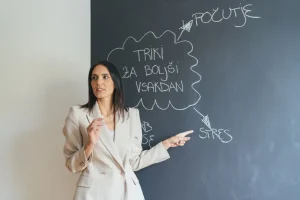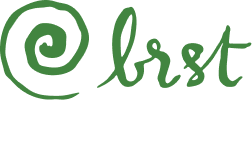Picture this:
Roza sent Mark an email inviting him to collaborate on her new project. Mark replied with a brief, one-sentence response, offering little more than a greeting. When Roza approached him in person about the project, he again answered with short sentences and no smile. Roza, who enjoys conversations and values building relationships with colleagues, felt ignored and became convinced that Mark disliked her. Mark, on the other hand, prefers to work quickly and efficiently, keeping personal conversations separate from work, and simply wanted to remain focused and productive.
Because of the differences, misunderstandings and tensions can develop in both professional and personal settings. Working with different types of people is a challenge we face not only in business but also in daily life. The fact is, each of us brings unique traits, experiences, and knowledge—that’s what makes life rich and interesting. Yet these very differences often create obstacles to mutual understanding, which is essential for successful collaboration.
The ability to work with diverse people is one of the most important skills for functioning effectively in various contexts. It is considered a soft skill. This means that collaboration can be learned—it is not simply something we are “born with.”
Soft skills are related to communication, relationships, and teamwork. They include public speaking, conflict resolution, negotiation, active listening, creative thinking, and emotional intelligence.
Diversity of Personality Traits
According to MBTI (Myers-Briggs Type Indicator), there are four categories of psychological types that both differ and overlap. Some people are more extroverted and enjoy teamwork and interaction, while others are more introverted and need time alone. In the same way, some individuals are more analytical and rational in their decision-making, while others are more emotional and intuitive. Some prefer to work with clear guidelines and structured plans, while others value freedom and spontaneity.
Certain people are more “sensing,” which means they process and apply information in a literal, concrete way. Others are more “intuitive,” which means they use gathered information to generate new ideas or possibilities that may not be immediately obvious. This includes seeing the bigger picture and recognizing patterns or potential beyond the concrete facts available.
These traits exist on a spectrum, so each person has a unique combination. For example, someone may be mostly rational in decision-making but still take emotions into account in certain situations. That is why we cannot expect people to always behave according to a single trait. Flexibility and awareness of these nuances are essential for better understanding and more effective collaboration.
Components of Successful Collaboration
A study by the University of Nebraska College of Law described effective collaboration as the result of several factors:
- Effective interaction (clear, open communication and active listening)
- Cooperation
- Conflict management
- Understanding colleagues’ cultural backgrounds
- The ability to make joint and individual decisions
- Respectful expression and acceptance of different opinions
- Flexibility
These qualities are components of emotional intelligence.
Emotional intelligence is the ability to recognize, understand, manage, and express one’s own emotions, as well as to recognize and understand the emotions of others. Research shows that people with high emotional intelligence are more effective at conflict resolution, understanding colleagues’ feelings, and fostering positive group dynamics. Empathy and social awareness support stronger collaboration and team connection, leading to greater productivity and success in group projects.
How to Improve Collaboration
Understanding yourself and how you work
Know what motivates you, what exhausts you, when you perform best, what you can contribute, and where your weaknesses lie. This helps you notice strengths in others, play to your own abilities, and handle situations more effectively.
Recognising others’ strengths and skills
Everyone has both strengths and weaknesses. Collaboration allows us to combine our strengths to achieve a common goal. When we identify the strengths of others, teamwork becomes more productive.
Developing emotional intelligence
Understanding your own emotions and those of others helps you take different perspectives, be more patient and empathetic, and reduce conflict.
Learning about different cultural contexts
What we don’t understand, we may easily misinterpret. Openness and curiosity are essential to understanding cultural backgrounds that shape behavior.
Understanding beliefs, thoughts, and behaviors
Behavior is influenced by beliefs, emotions, and thoughts. Discuss reasons behind actions—share how their behavior affects you and invite them to explain their perspective. Together, you can find solutions.
Techniques for effective expression
Express ideas clearly, leave space for questions, and remain open to feedback. Adapt your message to fit your purpose.
Listening skills
Practice active listening—follow the speaker’s story, check your understanding, avoid interruptions, and aim to grasp their point of view. This shows respect and builds trust.
Conflict resolution skills
Avoiding conflict or shifting blame does not help. Instead, use active listening, consider the other’s perspective, and seek compromise. Admit mistakes and show willingness to repair situations.
Goal-setting in teamwork
Set clear, achievable goals that matter to everyone involved. This creates stronger motivation and smoother collaboration.
Encouragement and praise
Contrary to the belief that too much praise makes people complacent, recognition inspires motivation. Acknowledging effort and progress encourages others to keep striving.
How Can Teams Achieve This?
Long-term coaching programs have proven the most effective. Coaches work with companies and teams over time, helping individuals discover their own strengths, talents, and those of others—building a foundation for effective collaboration. Through coaching, teams learn to set clear goals, identify time-wasting habits, encourage one another, reflect productively, and resolve conflicts systematically.
Learn more HERE.
Understanding and actively managing diversity among colleagues is a key element of workplace success. Knowledge, adaptability, empathy, and conflict resolution skills are vital for building strong relationships and achieving shared goals. This approach not only improves workplace culture but also fosters creativity and contributes to long-term organisational success. Continuous learning and adaptation are essential for developing personal and professional skills and for building trust-based relationships.
Cox, J. D. (2011). Emotional intelligence and its role in collaboration. Proceedings of ASBBS, 18(1).
































